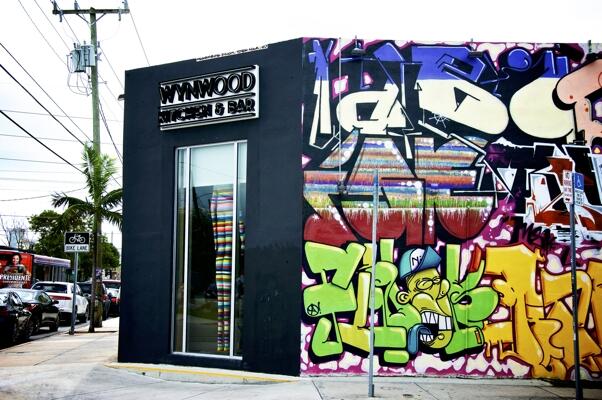
Historically, Graffiti has either been viewed as an expressive or destructive act. Graffiti is the drawing, painting, scribbling or scratching of words or images into public or private property (so it is understandable that some people think it’s the work of vandals). Other people believe that it is a cathartic creation which displays an issue to the public. This is the distinguishing aspect of graffiti from other forms of art: it grabs people’s attention by simply being out in the open, implying that it is meant to be viewed and considered by the world. It is definitely art, even if it is illegally done. The legality of a creation does not dictate its status as “art.”
Graffiti has been used as a method of political expression for years. During World War II and the following decades, the popular phrase “Kilroy was here” was spread by American soldiers. The phrase was accompanied by a drawing of a bald-headed man, with an exaggeratedly big nose, peeking over a wall while grasping the edge with both hands. The message was popularized by American soldiers, but Australian and British soldiers had their own versions of it, namely “Foo was here” and “Chad.” The political message is undetermined, however a person can surmise that the soldiers felt familiar with an unknown location when they discovered this particular art already scrawled on a wall. It also served as a connection between soldiers who represented different countries. When mainstream America became aware of the drawing, it was copied in all sorts of public areas. The ubiquity of the drawing made up its appeal, but it can still be regarded as a political expression since it is military affiliated. The Black Panther Party also used the phrase “Free Huey”, referring to Huey Newton who was the co-founder of the movement. In the 1970’s, youth culture upheld a prevalent graffito: “Dick Nixon Before He Dicks You.” Neither of these expressions had a contagious effect, but their political agendas were clear: Huey Newton should be freed from jail, and Richard Nixon should not be trusted. On the surface, graffiti may seem like a simple message or drawing, but it represents larger social issues such as war, civil rights and government trustworthiness.
Graffiti can also be a beautiful art form. As a part of Hip-Hop culture, graffiti serves as an aesthetic appeal rather than as a communicative component of political promotion. Graffiti became linked with Hip-Hop when movies like “Wild Style” by Charlie Aheam (1983), and “Style Wars” (1983) featured graffiti alongside hip-hop music and dancing. In recent times, hip-hop grafitti is associated with vandalism because these works are spray-painted over entire walls, as opposed to the aforementioned political graffiti, which is comparably small. Hip-Hop graffiti can be based on any kind of subject. Renowned Hip-Hop artist, Lee Quinones, has given life to wondrous visuals of dragons and lions, resting next to an ostentatious design of his first name. His work is street art at its finest, and it’s not limited by topic. The artists design whatever they want or feel; this is truly freedom of expression. The street artists of Wynwood, in Midtown Miami, have their art showcased on the sides of buildings, like a larger-than-life art gallery. These artists have permission to express themselves on these walls, known as the Wynwood Walls, therefore there is nothing illegal about this graffiti.
Graffiti is becoming an accepted form of art, and the Wynwood Walls is a testament to the idea that graffiti is not vandalism but a legitimate art form. Graffiti also stands for something bigger than itself, but discovering that “something” is the challenge of appreciating graffiti.
This site uses Google reCAPTCHA V3. Read the privacy policy and terms of service for more information.